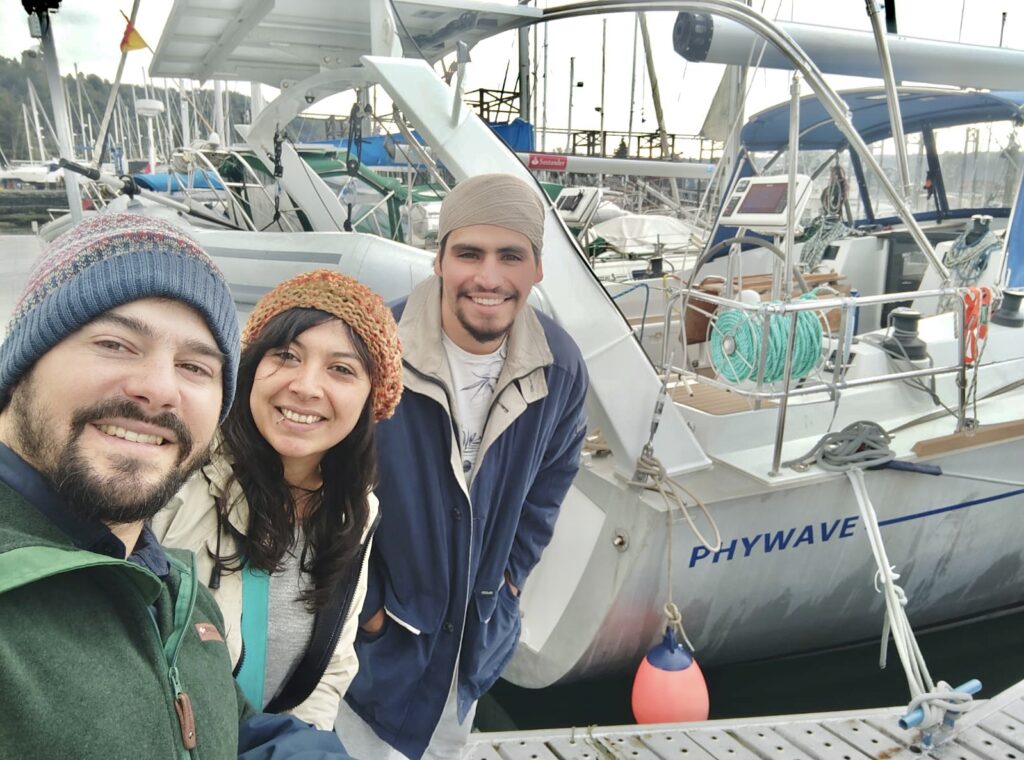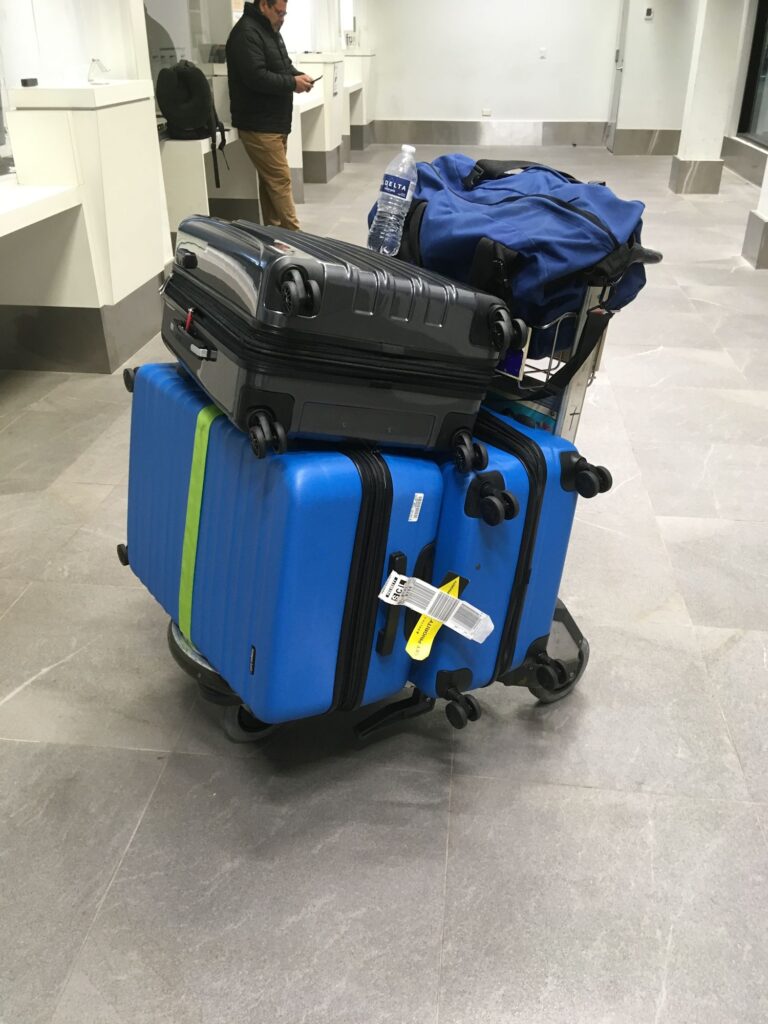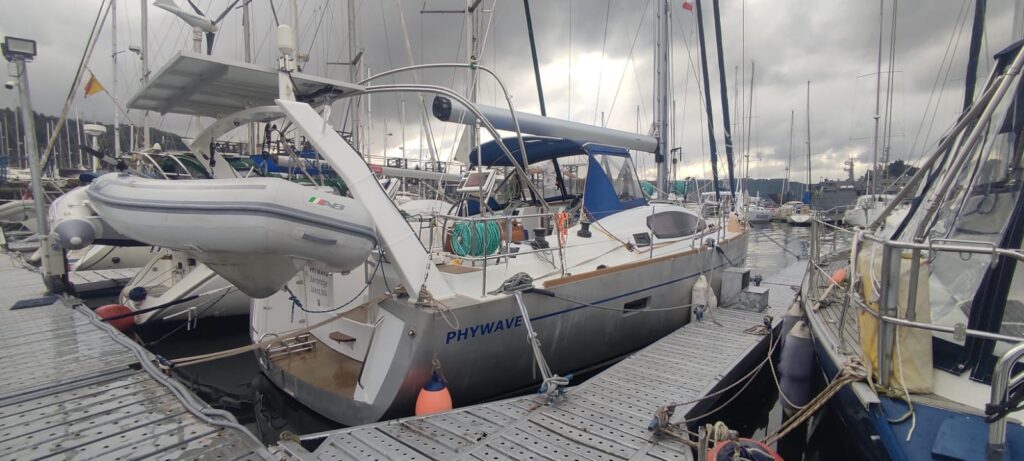When I left Puerto Williams on February 20, I was pretty burned out on sailing and living on the boat. The preceding 7 months had been intense sailing, for me at least, covering more than 12,000 nm, crossing the Atlantic Ocean twice, landing on 4 continents, culminating in a challenging solo voyage to Antarctica and back. I was due for a break.
I originally planned to be at home for 6 weeks, that timing meant to line up with meeting the delivery crew I hired to move my boat from Puerto Williams to Puerto Montt. In retrospect I realized 6 weeks was not long enough for a number of reasons.
There was a problem with the delivery crew I hired. That crew consisted of an older Australian sailor with extensive sailing experience in Tierra del Fuego and Antarctica as well as his home waters, that sailor’s adult son, also experienced in these areas, and the son’s girlfriend, sailing experience unknown. I thought this was a good choice. As it turned out they did a very poor job of planning the voyage. They booked outbound flights from Puerto Montt that left them only about 5 weeks to complete the trip. Similarly, they only brought about 4 weeks provisions with them. It was not nearly enough time or provisions given the highly variable and difficult weather that’s encountered along this route and would certainly delay them at times. I also think they viewed this as a family sailing holiday through Patagonia rather than a job commitment, taking a casual approach rather than pushing to get the delivery done as quickly as possible. After going only 80 miles in 2 days and getting pinned down by bad weather for about a week, they abandoned the voyage and returned to Puerto Williams with a variety of complaints (excuses). I encouraged them to refuel, re-provision, and change their outbound flights to provide more time but they chose to walk off the job instead. Given this sailor’s reputation I expected him to be trustworthy and complete the job I hired him for, and what he promised to do. Clearly it was a mistake to rely on him.
Fortunately, I was able to hire a replacement delivery crew within a few weeks. Mauro Carrizo is a Puerto Williams captain with his own sailboat Serendipia he uses for charter trips to the channels and fjords of Tierra del Fuego and south Patagonia. When I first arrived at Micalvi in Puerto Williams in January, Serendipia was the boat I tied alongside. Mauro’s family was on board at the time – his young daughter handed me an Oreo cookie across the railing. It was a nice welcome to Micalvi. Mauro gave me a fair, all-inclusive price for taking my boat to Puerto Montt along with 2 crew members he would hire. Mauro and his crew left Puerto Williams on April 15 and arrived in Puerto Montt on May 11, just 26 days to make the voyage and conclusively demonstrating there were no problems with my boat (which was among the Australian’s excuses). If you are thinking of taking a charter cruise in Tierra del Fuego or southern Patagonia on a sailboat I can highly recommend Mauro. His website is
https://www.serendipia-sailing.com/en

Having to hire a replacement crew delayed my schedule about 6 weeks but it was an additional 6 weeks I needed at home. It really took that long for me to feel re-energized about getting back to the boat and sailing across the Pacific. It also opened up an opportunity that I hadn’t expected.
When I left Phywave I had a long list of gear I needed to bring back to the boat. As I described in my previous post, while at home I decided to add a Starlink dish to that list. I have friends on 2 boats now sailing north in Patagonia that are using Starlink with great success so it made sense to add it. There are many other boaters around the world also using Starlink. It offers the ability to have a fast, open internet connection while sailing the Pacific unlike the Iridium Go which I now have. The Iridium Go is pathetically slow (less than 2 kbps speed) and uses a restrictive Iridium internet portal that only supports a very limited number of apps. It’s really impractical to use for anything more than text emails and downloading compressed weather forecast files called GRIBs.
I originally bought Starlink’s Standard dish which is designed for home or portable use. It’s not really intended for use on boats. After that purchase Starlink made some major changes. While I was at home they significantly lower the price of hardware and airtime plans for their Maritime package. The Maritime package consist of a larger dish (bigger aperture = narrower radiation beam, more gain, lower sidelobes and wider pointing angle range; i.e., a better antenna). It’s also designed to be mounted flat and pointed straight up making in more rugged than the Standard dish which is on a motorized pole mount and not meant to be used in motion. With the big price reduction I decided to return the Standard dish for a full refund and buy the Maritime package. I have a good place to mount it on Phywave’s arch. The only real downside is that it draws 2-3 time more power than the standard dish – always an important consideration on a modern sailboat that relies on electrical power and battery storage for just about everything from navigation to radios to the autopilot. Inconveniently, all Starlink dishes are powered by 120 vac which means I need to use an inverter to power it from the 12 volt batteries on the boat. Of course, the boat is already equipped with a large inverter but I rarely turn it on. I didn’t want to use it just to run Starlink so instead I bought a small sine wave inverter to run Starlink. The small inverter has a convenient on-off switch to eliminate the power drain when I’m not using Starlink. I’ve yet to install it all but I hope it works out as planned. Others have gone a step further and used various components to power Starlink directly from the 12 vdc on the boat, bypassing the 120 vac power supply. Making that conversion involved more work than I wanted to do.
With the Starlink Maritime dish and its components, and the other gear I already planned to bring back to Phywave, I had 3 big suitcases I needed to get to Chile as checked luggage. I shuffle things from one to another until they all weighed about 50 lbs. Fortunately, I was flying on Delta to Santiago, in the Delta One cabin, so 2 of the bags flew for free and the third cost me $200, still vastly cheaper and simpler than trying to ship them to Chile. Even so, for someone who has flown commercially, and in my own plane, all over the world for years with nothing more than a single carry-on duffel bag, all this luggage felt like a hassle to move around.
Upon arrival in Santiago I was directed to the Customs inspection line where my very poor Spanish served me well. After some back and forth and using Google Translate with the Customs agent, who became visibly frustrated at trying to understand the purpose of what was in my cases (para mi velero a Puerto Montt!), she waved me through.

Rather than try to get all the gear on the local flight and small plane to Puerto Montt, no doubt with high excess luggage charges if they’d take the bags at all, I decided to rent a car and drive to Puerto Montt. It was the right move. The big cases fit easily in the car. It was an pleasant 2 day drive south with an overnight stop in Chillan. I found very pretty countryside along the way, first through vineyards followed by farms and managed forests in the hills farther south. Having flown over this part of Chile in my own plane 3 times, it was a pleasure to see it from the ground.
I am finally back at Phywave and the cases are unloaded (not sure what to do with the empty cases). I’ll be here at least another 3-4 weeks getting various maintenance items done, including new anti-fouling bottom paint, and of course, installing Starlink. I’m in the marina at Club Nautico Reloncavi, a really nice marina compared to what I’ve experienced recently. I look forward to getting Phywave ready for the next chapter in this solo voyage to 7 continents.
